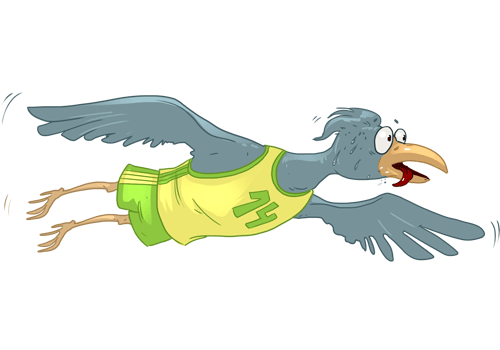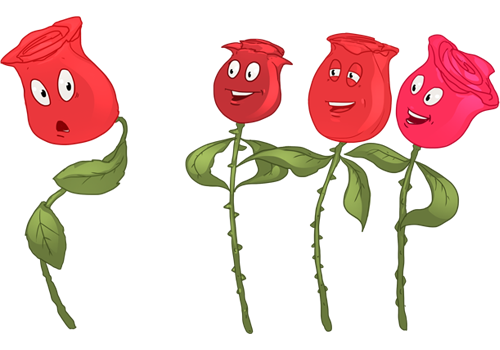Spanish
Español
Español
about 450 million
Mexico (110 million), Colombia (47 million), Spain (46 million), Argentina (40 million), Peru (28 million), Venezuela (27 million), Chile (17 million), Guatemala, Ecuador, Cuba, Dominican Republic, Bolivia, Honduras, Paraguay, El Salvador, Nicaragua, Costa Rica, Puerto Rico, Panamá, Uruguay, Equatorial Guinea, Western Sahara, EU
United States, Belize, Andorra, Gibraltar, Israel
United States, Canada, Australia, United Kingdom, France, Switzerland, Germany, Brazil, Morocco, Israel, Italy, Algeria


Spanish (español), also called Castilian (castellano), is a Romance language that originated in the Castile region in Spain. Like other Romance languages, it evolved from spoken Latin, after the arrival of the Romans in the Iberian Peninsula (218 B.C.). The colonization of America, initiated in the XVI century, caused Spanish to spread across large areas of both American continents. After gaining their independence, the new American countries started the process of linguistic unification.
Approximately 450 million people speak Spanish as a native language, making it second most spoken language after Mandarin Chinese in terms of its number of native speakers. 60 million people speak Spanish as a second language and 20 million students learn it as a foreign language. It is the third most frequently used language on the Internet (with 182 million users). Spanish is one of the six official languages of the United Nations and is also used as an official language by the European Union, Mercosur, FIFA and many more international organizations.
Romanization of the Iberian Peninsula, Latin overtakes pre-Roman languages
Migration period – Visigoth influence
Moorish invasion – Arabic influence
Alfons X of Castile – initiation of the use of Castilian language extensively (fundation of Toledo School of Translators)
Language of lyric poets
publication of Grammatica by Antonio de Nebrija – the first book to focus on the structure of a Western European language besides Latin
First university in Spain (Universidad de Palencia)
marked by a series of phonological and grammatical changes that transformed Old Spanish into Modern Spanish
Discoveries, language of trade and missionaries, expansion of the language across the Spanish Empire (influence of native American languages)
Like its Romance sister languages, Spanish has undergone a number of systematic sound changes during its evolution from Latin. It sometimes introduced diphthongs, and interestingly the initial clusters PL-, CL-, FL- turned into palatal /ʎ/, written ll e.g.: plorare → llorar.
The Spanish language uses the Latin alphabet with one additional consonant ñ, which represents a palatal nasal. The five vowels can take the acute acent.
There are 5 digraphs (pairs of characters used together to represent a single sound): ch, ll, rr, gu and qu.
Most interestingly there is a crucial and systematic difference between the indicative and subjunctive moods. While the indicative refers to real, or apparently real events, the subjunctive is used to express doubt or uncertainty about hypothetical situations.
| Male | Female | |
|---|---|---|
| the black cat | the round table | |
| Singular | el gato negro | la mesa redonda |
| Plural | los gatos negros | las mesas redondas |
Spanish has 3 regular conjugations (-ar, -er, and -ir), e.g. hablar (talk), comer (eat) and dormir (sleep), as well as several dozen irregular verbs or verb groups. A semi-irregular feature is a vowel shift between root-stressed and endings-stressed forms.
| Root-stressed | Ending-stressed | |
|---|---|---|
|
querer
want/love |
quiero
I want/love |
queremos
we want/love |
|
dormir
sleep |
duermo
I sleep |
dormimos
we sleep |
| Singular | Plural | |||||
|---|---|---|---|---|---|---|
| 1st person | 2nd person | 3rd person | 1st person | 2nd person | 3rd person | |
| Indicative | ||||||
| Present | como | comes | come | comemos | coméis | comen |
| Imperfect | comía | comías | comía | comíamos | comíais | comían |
| Preterite | comi | comiste | comió | comimos | comisteis | comieron |
| Future | comeré | comerás | comerá | comeremos | comeréis | comerán |
| Subjunctive | ||||||
| Present | coma | comas | coma | comamos | comáis | coman |
| Imperfect | comiera / comiese | comieras / comieses | comiera / comiese | comiéramos / comiésemos | comierais / comieseis | comieran / comiesen |
| Future | comiere | comieres | comiere | comiéremos | comieres | comieren |
| - | ||||||
| Conditional | comería | comerías | comería | comeríamos | comeríais | comerían |
| Imperative | come | coma | comamos | comed | coman | |
In addition, the following compound tenses can be formed with the auxiliary haber, with examples in the first person singular:
| Indicative | Subjunctive | |
|---|---|---|
| Compound perfect preterite | he comido | haya comido |
| Compound pluperfect | había comido | hubiera comido/hubiese comido |
| Future perfect | habré comido | hubiere comido |
| Compound conditional | habría comido | - |
About 60% of the Spanish lexicon consists of words derived from Latin, about 10% comes from Greek, 10% from Gothic, 10% from Arabic and 10% from other languages (such as Germanic, Basque, Iberic, Catalan, Maya, Nahuatl, Quechua, Aymara and others).
Arabic influence on the Spanish language is significant due to the Muslim presence in the Iberian Peninsula between 711 and 1492. These words are often recognizable from the initial 'al-' (the Arabic definite article).
While discovering new lands, the Spanish conquerers lacked vocabulary when confronted with American nature, so names of thousands of animals, plants and places were borrowed from Amerindian languages. Some of these words are used only in restricted areas of the Spanish-speaking world, but others have become internationally known (for example chocolate, tequila or puma).
Documented Nahuatl words in the Spanish language (mostly spoken in Mexico and Mesoamerica) include an extensive list of words that represent animals, plants, fruit and vegetables, foods and beverages, and domestic utensils.
Many of these words end with the suffix "-tl" in Nahuatl. This word ending, difficult to pronounce for Spanish speakers, evolved in Spanish into a "-te" ending (e.g. axolotl = ajolote).
The regional variants of the Spanish language are different from one another, more so in pronunciation and vocabulary than grammar. The greatest differences can be found between European Spanish (also called Peninsular Spanish) and Latin-American Spanish, but differences also occur within Spain and Spanish America.










